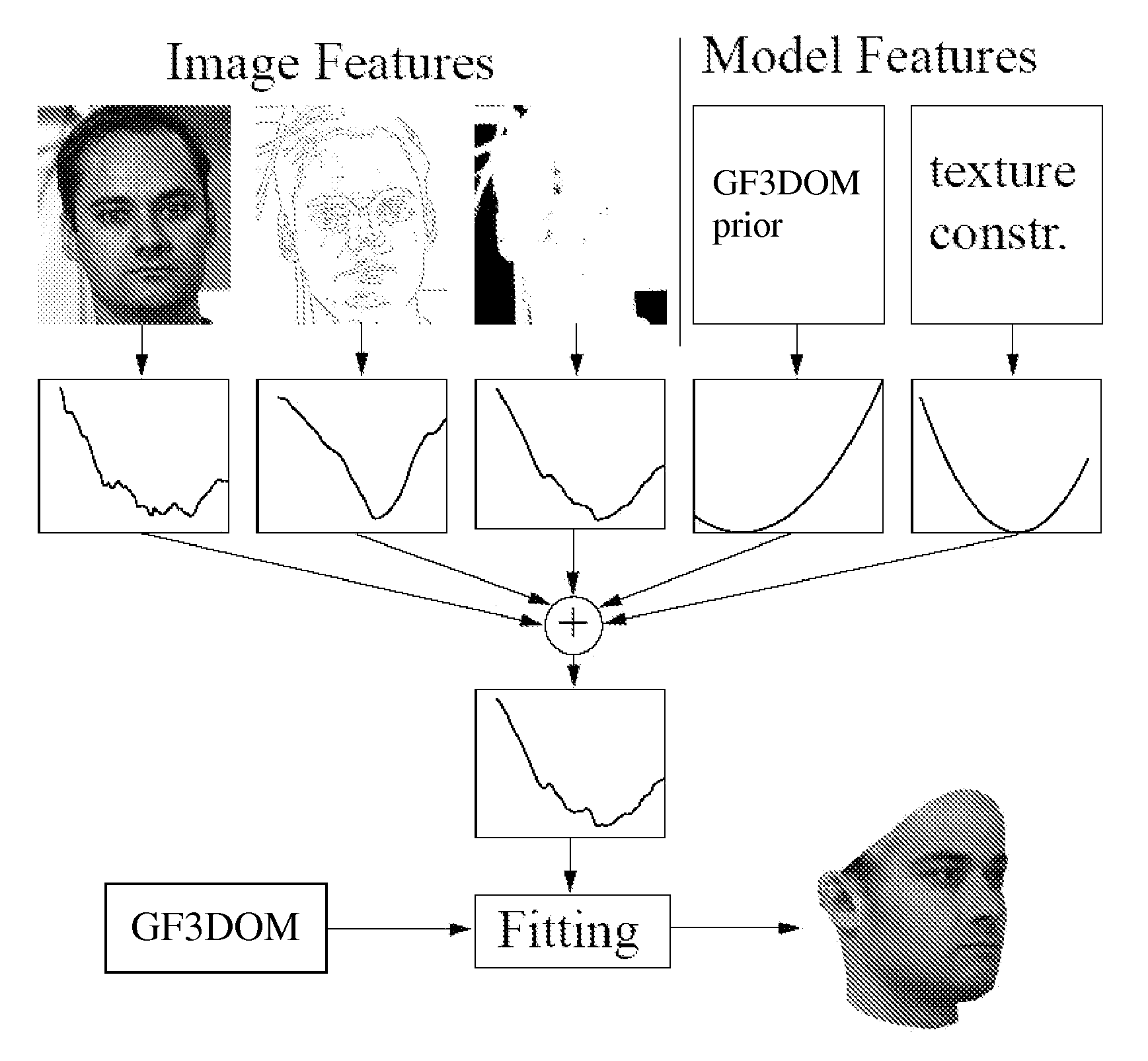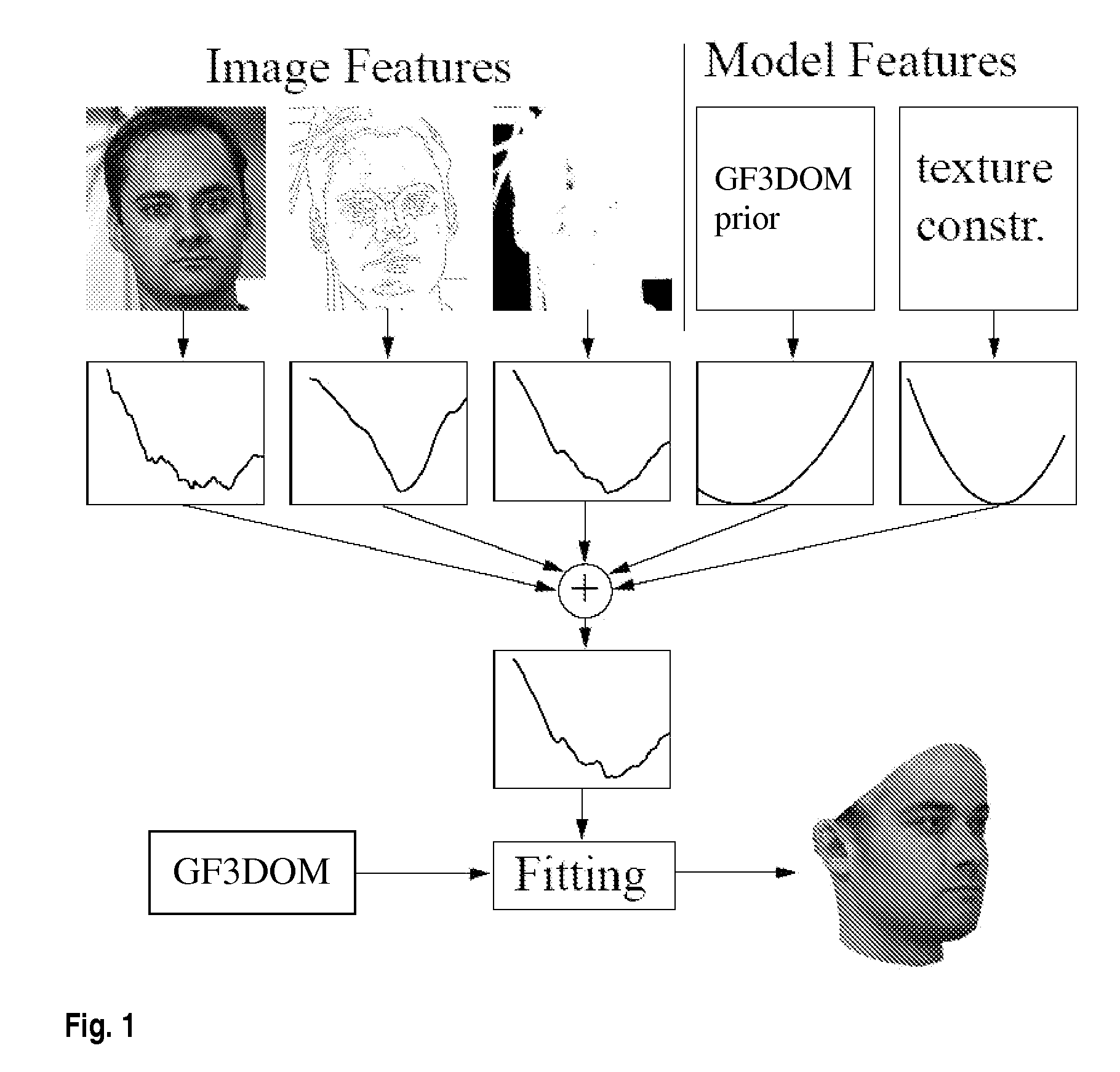Estimating 3D shape and texture of a 3D object based on a 2d image of the 3D object
a 3d object and 3d shape technology, applied in image data processing, instruments, electrical appliances, etc., can solve the problems of limited convergence properties, relatively poor provision, and low convergence radius of such algorithms, so as to maximise the overall performance, maximise the joint posterior probability, and maximize the effect of discrimination
- Summary
- Abstract
- Description
- Claims
- Application Information
AI Technical Summary
Benefits of technology
Problems solved by technology
Method used
Image
Examples
Embodiment Construction
[0043] In the following sections embodiments of cost functions for several features are exemplary shown. Cost functions for pixel intensity, edge features, specular highlight features and texture constraints features are described.
[0044] Example of a cost function for pixel intensity: Fitting the intensity of the pixels aims to recover the correspondence, the 3D shape, the texture, and the imaging parameters, by matching the colour of the model image to the colour of the input face image. Hence, the feature used to fit the pixel colour, fc, is simply an input image: fc(I(x, y))=I(x, y)
[0045] If the pixels are assumed independent and identically distributed with a Gaussian probability, the pixel intensity cost function is given by: -ln p(I(x,y)❘θ)∞12∑i(I(xi,yi)-Im(xi,yi))2(equation 6)
[0046] The cost function Cc can then be written as the inner product of the error vector ec: Cc=12ⅇcT·ⅇcwith eic=I(xi,yi)-tc(u,v;θ)op-1(xi,yi;θ)(equation 7)
[0047] Composing ...
PUM
 Login to View More
Login to View More Abstract
Description
Claims
Application Information
 Login to View More
Login to View More - R&D
- Intellectual Property
- Life Sciences
- Materials
- Tech Scout
- Unparalleled Data Quality
- Higher Quality Content
- 60% Fewer Hallucinations
Browse by: Latest US Patents, China's latest patents, Technical Efficacy Thesaurus, Application Domain, Technology Topic, Popular Technical Reports.
© 2025 PatSnap. All rights reserved.Legal|Privacy policy|Modern Slavery Act Transparency Statement|Sitemap|About US| Contact US: help@patsnap.com



